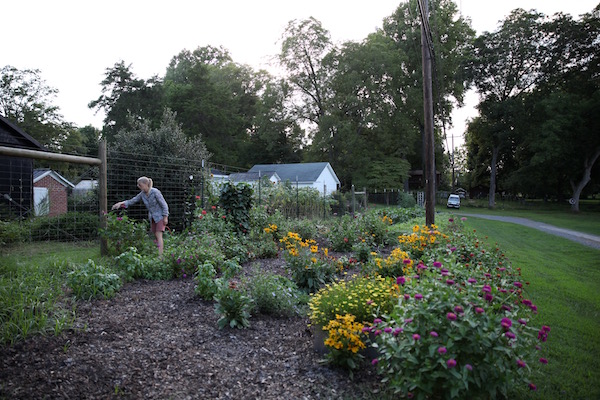2016, Week 8: Beneficial Insects and the Plants they Love [Part 1]
Renfrow Farms > Farm Happening Newsletters > 2016, Week 8: Beneficial Insects and the Plants they Love [Part 1]
We have not spent much time outdoors on the farm in the past couple of weeks since planting the first round of collards and broccoli. So, since there’s not much to report on that front, today I’m going to dream of summertime and share some tips on how to attract beneficial insects to your garden this year. These critters will help increase crop yields, reduce the presence of bad bugs without the need for pesticides, and cultivate a diverse and beautiful ecosystem.
Not all flowers are created equal when it comes to attracting pollinators and beneficial insects. I have a bit of flower nomenclature (and some pretty photos) for you to brighten this dreary day. A simple way to judge many flowers’ attractiveness to insects is based on its type of bloom – “single,” “semi-double,” and “double.” In the photos below, the focal flowers are cosmos, but this distinction also applies to lots of other flowers, including sunflowers, zinnias, daisies, black-eyed-susans, peonies and more.

Single pink sensation cosmos in a June farm stand bouquet
Single-flowered blooms are a very important ingredient to any gardener seeking to build a strong habitat for bees, butterflies, and other beneficial insects because they provide easier access to nectar and pollen, while the double blooms often are lacking these reproductive parts, or the fluffy petals just make them hard for the insects to access them.
 Semi-double aka “collarette” cosmos, which has a small layer of shorter petals around the flower’s center
Semi-double aka “collarette” cosmos, which has a small layer of shorter petals around the flower’s center
 Stunning fully-double bright pink and burgundy cosmos on the farm in August
Stunning fully-double bright pink and burgundy cosmos on the farm in AugustThese are a few easy-to-grow single-flowered blooms that attract dozens of beneficial insects to your garden – Cosmos, zinnia, echinacea, sunflower, single-flowering marigold, daisy, feverfew, chamomile, Chinese forget-me-not, calendula (edible petals), nasturtium (edible flowers and foliage!), and more. We have seeds for all of these at Renfrow’s and I’d be more than happy to help you navigate the 100+ varieties for maximum beauty and utility.
The presence of honeybees and other pollinators is critical for high yields of many summertime veggies. Squash, zucchini, cucumbers, watermelons, cantaloupes, winter squash, and okra all require insect pollination. Peppers are self-pollinating, but produce more with bees’ help. Tomatoes, beans, and peas are self-pollinating, and sweet corn is pollinated by the wind.
Many of the industry’s most popular flowers for bedding borders and flower pots, while beautiful, are not going to be as helpful in cultivating a diverse ecosystem as others. Impatiens, petunias, begonias, geraniums and fully-double marigolds will not attract many bees and butterflies on their own, so bee sure to diversify! There are dwarf varieties of nasturtium, zinnia, and even sunflowers that are great for pots.
Next week I’ll share about several herbs that are delightful to humans and insects alike.
******
In case you missed last week’s Seasonal Gardening Products and Tips –
February is the ideal time to give your pecan trees some zinc fertilizer.
Now is the time to plant strawberries. We have 6 varieties of bare-root bundles of strawberry plants at Renfrow’s. Learn more by reading our
Strawberries Gardening Sheet.
 Semi-double aka “collarette” cosmos, which has a small layer of shorter petals around the flower’s center
Semi-double aka “collarette” cosmos, which has a small layer of shorter petals around the flower’s center Stunning fully-double bright pink and burgundy cosmos on the farm in August
Stunning fully-double bright pink and burgundy cosmos on the farm in August





